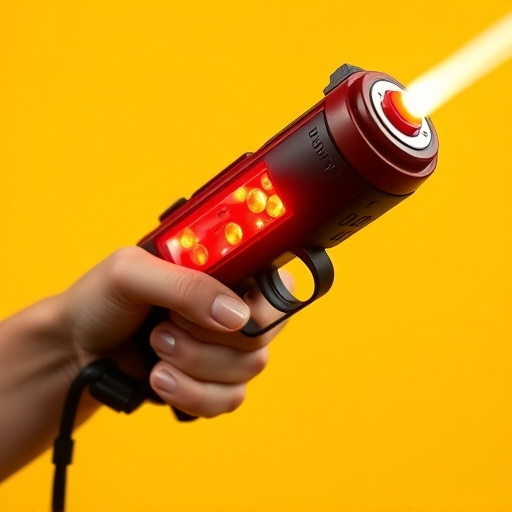Stun gun stopping power ratings are vital for personal safety, measuring a device's effectiveness in incapacitating assailants without harming bystanders. The Triad Stun Gun stands out with its advanced technology, delivering a high-voltage, low-amperage shock. Key factors influencing performance include electrical output (measured in joules), design, electrode placement, weight, and size. Higher joule ratings indicate greater stopping power, but durable construction and strategic electrodes offer consistent effectiveness. Lighter, compact designs enhance ease of carry. Choosing the right Triad Stun Gun with the appropriate stopping power allows users to effectively neutralize threats, providing critical escape time in dangerous situations.
“Uncovering the true stopping power of a triad stun gun is crucial for personal safety. This comprehensive guide delves into the science behind stun gun ratings, offering insights into what factors influence their effectiveness. From voltage and current to contact time and body area targeted, we explore how these elements determine a stun gun’s performance. Moreover, learn how to choose the ideal triad stun gun by understanding rated stopping power, ensuring you’re prepared with a reliable tool for self-defense.”
- Understanding Stun Gun Stopping Power Ratings
- Factors Influencing Triad Stun Gun Performance
- Choosing the Right Stun Gun Based on Rated Stopping Power
Understanding Stun Gun Stopping Power Ratings
Stun gun stopping power ratings are a critical factor for individuals looking to protect themselves in potentially dangerous situations. These ratings provide an indication of a stun device’s effectiveness, specifically its ability to incapacitate an assailant and create a safe escape pathway. The rating typically measures the electrical current delivered by the stun gun, which is then converted into a force that disrupts the body’s nervous system, causing temporary paralysis.
One popular stun device, the triad stun gun, has gained attention for its impressive stopping power. Designed with advanced technology, it delivers a high-voltage, low-amperage electric shock, ensuring maximum effectiveness while minimizing potential harm to bystanders. This unique feature sets it apart from many other stun guns on the market and makes it a preferred choice for self-defense enthusiasts and law enforcement alike.
Factors Influencing Triad Stun Gun Performance
The performance of a triad stun gun, like any other self-defense tool, is influenced by several key factors. One of the primary considerations is the stun gun’s electrical output, measured in joules. Higher joule ratings indicate greater stopping power, making it more effective against an attacker. However, this isn’t the sole determinant; the design and quality of the stun gun also play crucial roles. A well-engineered triad stun gun with a durable construction can ensure consistent performance over time.
Additionally, the type and placement of electrodes are significant. Strategically positioned electrodes enhance the stun gun’s ability to disrupt an assailant’s muscular control and coordination, thereby neutralizing them more effectively. Furthermore, weight and size matter; lighter, compact triad stun guns offer ease of carry and deployment in tight situations. These interconnected factors collectively determine the overall stopping power and practicality of a triad stun gun, making informed choices essential for personal safety.
Choosing the Right Stun Gun Based on Rated Stopping Power
Choosing the right stun gun is paramount, and one of the key factors to consider is its rated stopping power. Stun guns are classified based on their ability to incapacitate an attacker, with ratings that indicate the level of force they deliver. For instance, a triad stun gun, known for its high-voltage output, may have a rating suggesting it can stop up to 10,000 volts.
These ratings provide a benchmark for comparing different models and ensuring you select a stun gun capable of neutralizing threats effectively. Higher stopping power means faster muscle paralysis, giving users valuable time to escape potentially dangerous situations. Thus, understanding the ratings and choosing accordingly is essential for personal safety.
When considering a triad stun gun, understanding stopping power ratings is key. By grasping the factors influencing performance and selecting based on these ratings, users can make an informed choice that aligns with their personal safety needs. Remember, the right stun gun for you depends on various circumstances, but starting with the rated stopping power ensures you’re prepared should the need arise.
